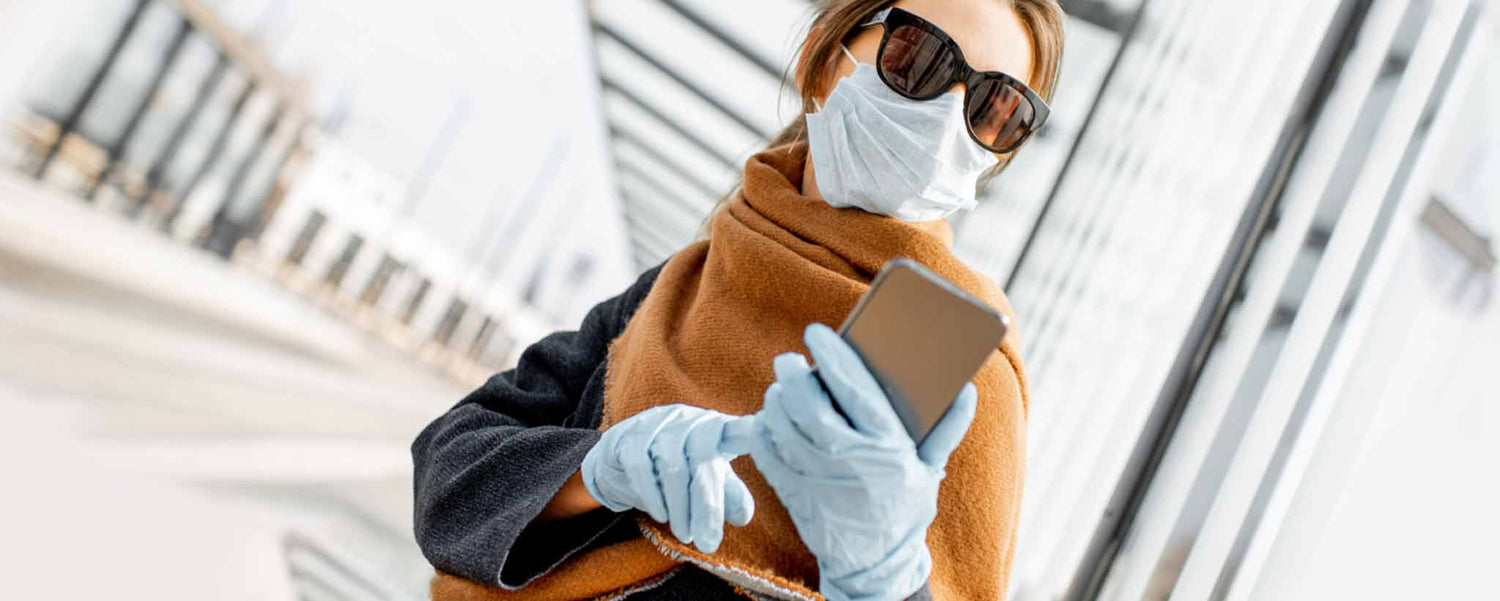The public may be wearing masks for the foreseeable future—at least two years.
Fashionable and Safe
Protecting yourself from viruses does not mean you need to leave the house looking like a CDC inspector. If you choose to wear a hazmat suit, you will get no criticism from me. The goal is to remain safe. The key elements are oral nasal protection, protective eyewear, and if you are going to touch communal objects, gloves.
Masks
To be fashionable, stock up on a variety of face masks. Solid colors are easier to match with various prints in your wardrobe. Decorative prints can add a pop of color to solid outfits. In business settings, black, navy, brown, gray, or muted colors are best.
A face mask should completely cover your nose mouth and chin without air gaps. It is best to achieve proper fitting in advance, rather than assuming that a courtesy mask that might be handed out at your destination will fit you properly. Besides, a mask may be required to enter establishments.
Protective Eyewear
As virus transmission ebbs and flows, people are realizing that masks alone do not protect an important point of entry—your eyes. Curved safety glasses or goggles prevent airborne spittle from entering eyes from the front or side. Prescription glasses provide a measure of frontal protection. You can wear large safety glasses over prescription eyeglasses for additional top and side protection. If you do not have either or want to be more fashionable, consider wearing large sunglasses with your face mask.
Gloves
There are many fashionable gloves made of leather or fabric. Some have ornate stitching or rhinestones. Fingerless gloves allow you to use touch enabled displays. But none of these are ideal for virus prevention. They absorb moisture (and virus) or expose parts of your hand. It is best to wear 9 mil nitrile gloves. Bulk boxes come in black, lavender or blue. Dispose of them upon removal and promptly sterilize your hands.
Whatever comes in contact with potential contamination should be washed or discarded when you arrive back home or at your hotel. Assume crowded convention centers or bars are more contagious than open-air events with social distancing.
It is best to wear items that can either be washed by hand in a sink or thrown into a washing machine. Until washed, keep them separate from other dirty clothes. Dry cleaning can get expensive. If you decide to wear a blouse, layer it with a washable wrap. If you carry a purse or bag, keep it zipped up.
When returning from crowded rooms, it is best to quickly remove your clothing, sanitize your smartphone, purse, eyeglasses, keys, and other accessories. Shower and wash your hair. It is useless to wear protective equipment only to return home, contaminate your pillow and rub your bare face in it. If your hairstyle is not conducive to wash-and-wear, consider wearing a scarf or non-permeable hat when outdoors.
With proper protective equipment, you may feel like a CDC inspector. But you can still be fashionable.





